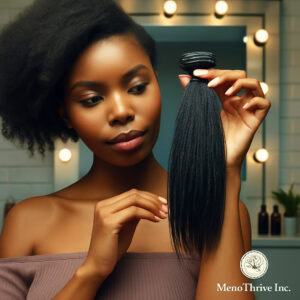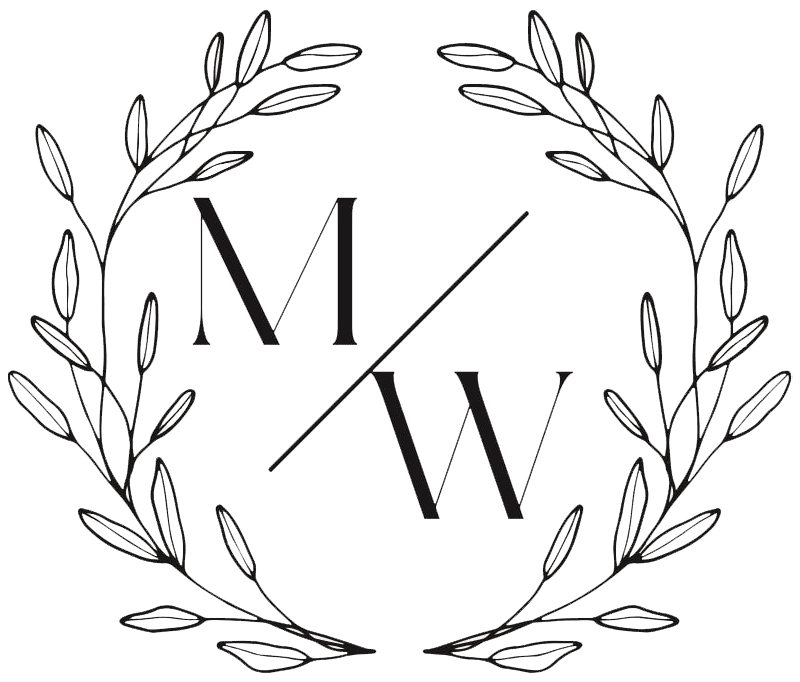
Research shows that synthetic hair extensions often contain harmful chemicals, including carcinogens and endocrine disruptors, that can significantly affect hormonal health. This is especially concerning for women in midlife, where hormonal balance is already in flux.
This article examines the hidden risks of toxic chemicals in hair extensions, their impact on menopause symptoms, and provides actionable steps for safer alternatives.
Table of Contents
-
Introduction: Beauty Shouldn’t Risk Your Health
-
Toxic Chemicals in Hair Extensions: What You Need to Know
-
How Toxic Chemicals Affect Hormones During Menopause
-
Health Risks Beyond Menopause
-
7 Action Steps to Reduce Your Exposure
-
Safer Alternatives and Trusted Brands
-
Final Thoughts: Your Health Comes First
Beauty Shouldn’t Risk Your Health
Protective styles, such as braids, twists, and wigs, are staples for many Black women. They help preserve natural hair and reduce breakage. However, synthetic hair often contains PVC and other chemicals that can leach into the scalp and bloodstream through sweat and heat from styling tools1.
During menopause, declining estrogen and progesterone levels make women more sensitive to endocrine disruptors, amplifying their effects2.
Toxic Chemicals in Hair Extensions: What You Need to Know
Studies have shown that many synthetic hair products are made with polyvinyl chloride (PVC) and coated with chemicals to maintain their texture and durability. Here are some of the most concerning toxins:
-
Formaldehyde – A known carcinogen linked to cancer and respiratory problems.
-
Phthalates – Chemicals that mimic hormones and disrupt endocrine function.
-
Lead – Associated with neurological issues, cardiovascular disease, and reproductive harm.
Learn more about toxic chemicals in hair extensions
Why does this matter for menopause? Because your body is already adjusting to lower estrogen levels, it is more vulnerable to endocrine-disrupting chemicals. According to the Environmental Working Group (EWG), many hair products marketed to women of colour contain higher concentrations of toxic chemicals compared to mainstream products6.
How Toxic Chemicals Affect Hormones During Menopause
Menopause involves hormonal fluctuations that affect every system in the body. When exposed to endocrine-disrupting chemicals, the impact can be severe:
❌ Triggering hormonal imbalance – Chemicals mimic or block estrogen receptors7.
❌ Worsening symptoms – Hot flashes, insomnia, and mood swings can intensify.
❌ Increasing disease risk – Exposure is linked to breast cancer and metabolic disorders8.
The NIH warns that endocrine disruptors may have long-term consequences on metabolism, bone health, and cardiovascular function.
Scientific evidence: According to the National Institutes of Health (NIH), endocrine disruptors have long-term effects on hormone health and metabolism.

Health Risks Beyond Menopause
The dangers aren’t limited to menopause. Prolonged exposure to toxic chemicals in hair extensions can increase risks for:
-
Cancer – From carcinogens like formaldehyde.
-
Cardiovascular disease – Linked to heavy metals like lead.
-
Fertility and reproductive issues – Caused by phthalates and other hormone disruptors.
Your beauty routine should not compromise your long-term health.
7 Action Steps to Reduce Your Exposure
You don’t have to give up protective styles completely. Here are 7 steps to minimize the impact of toxic chemicals in hair extensions:
-
Choose plant-based or non-toxic hair brands – Avoid PVC-based synthetic hair.
-
Pre-treat synthetic hair before use – Soak in apple cider vinegar (ACV) for 30 minutes to remove surface chemicals.
-
Wash hair thoroughly after styling – Use sulphate-free shampoos to minimize scalp buildup.
-
Take breaks between installs – Allow your scalp and hair follicles to breathe.
-
Check ingredient transparency – Support brands that disclose material safety.
-
Use natural hairstyles whenever possible – such as twist-outs, braids with your own hair, or wigs made from safe fibres.
-
Ventilate your space – If you use hot water or heat on synthetic hair, do so in a well-ventilated area to reduce inhalation of toxins.

Safer Alternatives and Trusted Brands
Making the switch to healthier options can significantly reduce your exposure. Here are two trusted alternatives:
✅ Rebundle® – The first U.S.-based company offering plant-based, biodegradable braiding hair free of harsh chemicals.
✅ Natural Hair Styling – Embrace your natural texture with styles that support scalp health.
Additional Resource: Black Women for Wellness Guide
Final Thoughts: Your Health Comes First
Your hair is your crown, but your health is priceless. During menopause, protecting hormone balance should be a top priority. By choosing safer, toxin-free options and following preventive steps, you’re not just investing in your hair—you’re investing in your well-being.
💜 Want more tips on thriving during menopause?
Visit MenoThrive Wellness for expert resources and community support.
🛍️ Ready for safer hair solutions?
Shop Rebundle® – more comfort, less waste today.
-
✅ Sources and Footnotes
Footnotes
-
Environmental Working Group (EWG). “Toxic chemicals in hair products marketed to Black women.” https://www.ewg.org ↩
-
International Agency for Research on Cancer (IARC). “Formaldehyde classification.” ↩
-
NIH. “Endocrine disruptors and women’s health.” https://www.nih.gov ↩
-
American Cancer Society. “Environmental exposures and cancer risk.” ↩
-
6 Black Owned Vegan Braid Extension Brands to Switch to
-


